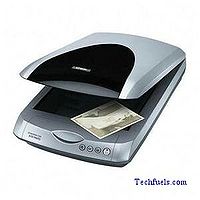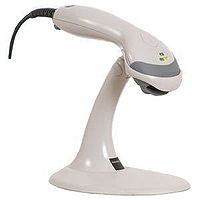Digital Scanning
From booktorrent

Contents |
Digital Scanning
For digital barcode scanners, see below.
The act of digital scanning, that is "to move a finely focused beam of light or electrons in a systematic pattern over (a surface) in order to reproduce or sense and subsequently transmit an image[3]," is the technical process by which physical materials (usually paper, in this context) are interpreted into a digital format. Digital scanning beds are built to receive two dimensional items, and so books and other papers are converted into a format that can be stored on servers and accessed and manipulated via computers and seen on monitors.
Uses
There are many businesses that are focused on digitizing paper materials with scanners and collecting digitized and digital-born materials into archiving and organizing software. Usually this service is for businesses or organizations trying to minimize their paper storage, often with the intent that materials will be easier to research off of a server or servers. Obvious problems include time, cost, durability, and that researching functions are limited by built-in software capabilities (unless a business also has a master IT person on staff who can personally hack together a more dynamic system as is needed..?)

Digital Barcode Scanners
Also use a focused beam of light or electrons, etc., but specifically are used to interpret barcode images into a compatible software system in order to identify cataloged items. Used in modernized libraries to identify library materials, keep track of checked in and checked out materials via cataloging whether they are within or without the library system premises, respectively.
Barcode scanners are a tool that allows faster inventory checks, which is important in large collections of books for more accurately keeping records of one's materials.
Such scanners are also used in groceries, which is (oddly) one of many commonalities between libraries and grocery stores. They both need to keep track of similar goods, and have records of the usage/consuming of those goods.
Related Pages
References
What Evergreen Actually Uses
If you think about the contents of an archive do you get a picture of say "paper", and lots of it? Well, that's pretty much the core content of what is obtained, cured, digitized, and saved within an archives.
Unfortunately, our particular Evergreen archives does not possess any of the above listed beautiful scanning machines. They do however persists in their continued stubborness to process thousands and thousands of documents which then get entered into the digital library.
You may ask, how is this done? They don't have any lovely fast, new machines. Maybe they are transcribing them the old fashion way, via pen in hand? Alas, no, not pen in hand, but something very similar. They use outdated hand-me-down scanners that nobody else wanted any more. The lack of resources or other financial difficulties in procuring fine fast efficient equipment hasn't deterred the archive staff in continuing their digitization of materials, it only slows them down "a bit".
Some day, maybe soon, the archival Gods will descend upon the basement and bestow upon its staff the new wonders in technilogical scanning equipment. But, until then, they will keep plugging away until every pile of source material is safely digitized. Go Archives!!
